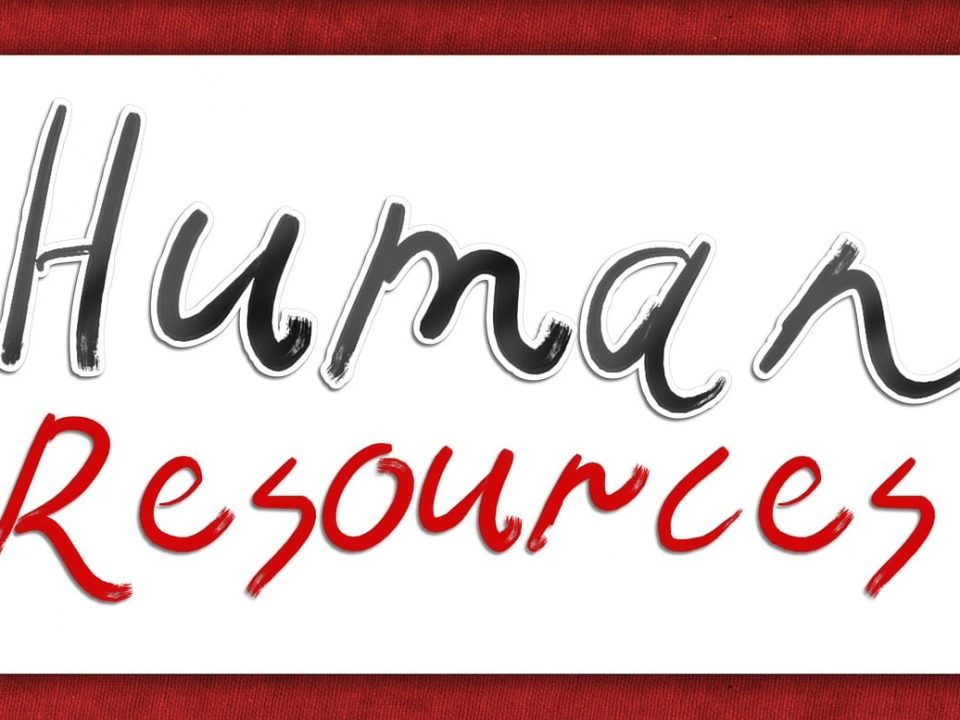A guide to formatting personal letter

Question: What is a personal letter? Briefly explain its history. What are the types of personal letters?
The development of technological advancement has crushed the golden days of writing letters. But, still, when you receive a letter from somebody, it lights up your spirit, and you will feel joy from the core of your heart.
Are you enjoying your vacations after the exams? If yes, then it is a good time to learn about the personal letter and formatting personal letters.You just need a pen and paper and start practicing writing letters to your near and dear ones.If you are learning to write a personal letter, the task may seem more tedious than writing an email.Undoubtedly, you will think about what to write in a personal letter or how to start it.Cheer up. Our blog on formatting personal letters is here with complete guidelines on writing and structuring a personal letter.
There are many more things that you will learn apart from understanding formatting personal letters; let’s begin.
Personal letter: An overview
Formal things cannot be personal and personal letters cannot be put into the category of a formal letter. Personal letters are sent from one individual to another at a personal level. The letter relates to personal events, personal things or personal experiences.Personal letters are not just invitation envelopes; rather, they are a way to streamline their emotions.Personal letters are handwritten, which makes them more personal.
Concise background of the personal letter
You will be amazed to note that the first personal letter was written in 500 BC. Since then, the propensity to write letters began and became a daily affair for educated people. Upon receiving a personal letter, people used to feel good. Sending letters continued for many years in relationships which were too distant.As per this blog on formatting personal letters, it was a convenient and simple way to communicate with distant near and dear ones.
In the last 40 years, there was a prevalence of sending personal letters, and it was the only medium that could help people know about other people’s health.But with the advent of technology, the habit of sending personal letters just vanished. The advanced technology gulped the habit of writing letters.However, as per this blog on formatting personal letters, some people still value the art of sending personal notes to others.Letters are an essential part of literature. Many museums worldwide have kept ancient letters, which have become a part of history.
As per a study, about 60 per cent of people do not like writing letters; in contrast, 69 per cent of people adore the art of writing and receiving letters.
What will you feel if you get a letter from Hogwarts? Indeed, you will feel thrilled compared to a tweet or message through any social media platform. Different types of letters will be discussed in this blog on formatting personal letters.
Kinds of personal letters
Personal Correspondence: The letter is usually written to friends, members of the family or acquaintances to maintain contact with them or to share updates.
Thank-You Letters: The letter expresses gratitude for gifts, favors, or other acts of kindness.These letters are personal letters that express gratitude to someone for their help, support, or kindness. These letters may be written to friends, members of the family, or professional contacts.
Apology Letters: The letter apologises for any mistakes, wrongdoings or misunderstandings.These personal letters express regret for a mistake, offence, or wrongdoing. As per this blog on formatting personal letters, these letters may be written to friends, members of the family, or professional contacts.
Congratulatory Letters: The letter is written to congratulate someone on amilestone or an achievement.These personal letters express congratulations to someone for an achievement or accomplishment. These letters may be written to friends, members of the family, or professional contacts.
Love Letters: The letters express romantic feelings towards someone special. Love letters are personal letters that express emotions. As per this blog on formatting personal letters, they may be written by lovers, spouses, or partners and may include expressions of affection, admiration, or devotion.
Condolence Letters: These letters are written to express sympathy and offer condolences to someone who has lost a loved one. Condolence letters are personal letters that express sympathy to someone who has lost a loved one. As per this blog on formatting personal letters, these letters may be written to friends, members of the family, or acquaintances.
Invitation Letters: These letters are written to invite someone to an event or occasion, such as a wedding, graduation, or birthday party.
Recommendation Letters: These letters are written to recommend someone for a job, scholarship, or any other opportunity.
Cover Letters: These letters are written to accompany a job application or a resume and are used to introduce oneself to a potential employer and highlight qualifications and experience.
Friendly Letters: These letters are written to friends or acquaintances to chat, catch up or share stories.
Informal letters: The letters are personal letters written to friends, members of the family, or acquaintances. These letters are usually casual in tone and may include personal stories, updates, or expressions of love, gratitude, sympathy, or congratulations.
Formal letters: These letters are personal letters written in a formal tone and are usually addressed to people in positions of authority or business contacts. These letters may include requests, applications, invitations, or complaints.
Formatting personal letter
Letters were written to close ones before as people were lessbusy and had more time in hand.Letters are a more powerful and exquisite medium to establish links with families and friends than email writing, text messages, etc. But writing a letter is tougher than sending an email.Therefore, an understanding of formatting personal letters is vital to letter writing. In the below section, we will discuss a standard formatting personal letter.
Date: The letter’s writing date is usually written on the top right-hand corner of the page.
Salutation: It is a greeting used to address the receiver. If you know the receiver’s name, you can write “Dear” followed by the name. If you are blank about the name, you can write “Dear Sir/Madam” or “To whom it may concern.”
Body: The body of the letter contains the main message you want to convey to the recipient. This can be divided into paragraphs to make it easier to read. For example, in the first paragraph, you can introduce yourself and explain why you wrote the letter. In the subsequent paragraphs, you can provide more details or expand on the main points you want to make.
Closing: The closing is part of the letter where you wrap up your message and say goodbye to the recipient. Common closings include “Sincerely,” “Best regards “or” Yourstruly.”
Signature: After the closing, leave some space to sign your name. You can also include your full name and contact information below your signature.
Postscript (optional): If you miss something to be mentioned in the body of the letter, you can add a postscript (P.S.) after the letter to include it. This is usually placed after the signature.
The things to do and avoid while writing a personal letter
To maintain a healthy communication, it is vital to write a personal letter, which acts as a communication tool. But if you are not sure about certain things, you will certainly reduce the value of the letter. So now, in this blog on formatting personal letters, we will discuss things to do and avoid while writing a personal letter. Following these things will help both recover and the sender to avoid misinterpretation of the letter’s content.
Enquire about the receiver’s life: It is essential to enquire about the receiver’s health and update about your health while writing a personal letter. For instance, ‘I learned you received an award for your good performance, so how are you feeling now?’ As per this blog on formatting personal letters, the receiver will comprehend that you are concerned about them by writing these lines.
Avoid gossip: It is not a good practice to judge one’s character and write about it in the form of a personal letter.Instead, you must maintain your composure and wait for the correct time to write about your inner feelings.
Be precise: No word limit is set for writing a personal letter. But formatting personal letters requires following etiquettes and placing views clearly and concisely.
Do not tell everything: If you want to establish great communication, the medium of writing a letter is the best. There is no harm in sharing everything you want to share with others, but it is better to avoid sharing things that are too personal or intimate. Sharing them can embarrass you and the receiver.
Be friendly: On receiving a letter, everybody believes they will hear something good. But, living distantly, you never know how the other person is or in what situation. So, be soft while composing a letter.
Refrain from reflecting anger: If you speak bitterly with someone, the person may forget the words used, but this is not the case with writing a letter.As per this blog on formatting personal letters, written words sound more negative and stronger than spoken words.It can cause permanent damage to the relationship as it remains there for a longer time. Hence, never reflect your anger through letters.
Be positive: People can be influenced correctly when you write or speak positive words.For example, when writing a letter, you must think positively to motivate others with your ideas.
Refrain from being negative: You should not write a letter of negativity or pessimistic thoughts. Such letters are not acceptable to any person in any situation.
Answering a personal letter
If you want to address the art of writing a letter, you must follow certain vital details.When you receive a personal letter from someone, you must remember that the other person is waiting for your instant reply. Hence, knowing the correct way to post an instant reply to a personal letter is necessary. Answering a personal letter is a way to maintain the flow of communication between the sender and the receiver.In this section of the blog on formatting personal letters, we will discuss some tips that can help you write a good reply to a letter.
When you reply, use the sender’s first name with a cordial greeting.You can also address the sender by taking their name instead of adding a greeting.Your address to the sender depends on the type of relationship you have with them.
To begin with, the opening content of a letter depends on the sender who will be getting the letter from you.Your reasons behind writing the letter will decide the opening content. The opening paragraph may contain common introductory statements.
The next part of the letter will contain your reply to the letter.You must not make any false statements in personal letters.As per this blog on formatting personal letters, you must use an optimistic tone while writing about your problems to the sender. Additionally, talk about some positive things happening around you,
Refrain from writing a letter that primarily talks about your life. It is not a good way to write a letter whose content is completely related to you. If you wish, you can add a few questions to be addressed by the sender. You can ask about their lives so that the flow of communication through letters is maintained.
Lastly, finish your letter with best wishes.
Must-read letters available online
As stated previously in this blog on formatting personal letters, renowned personalities write many historical letters kept in museums around the world. To better understand how to write a compelling and heartfelt personal letter, you can refer to several literary collections of personal letters penned by a few renowned personalities from around the world. These letters can be accessed online or read at any national library. We will list down a few of the must-read letters in the below section of the blog on formatting personal letters.
- Rainer Maria Rilke: Letters to a Young Poet
- Jane Austen: Jane Austen’s Letters
- Franz Kafka: Letters to Felice
- Martin Luther King Jr.: Letter from the Birmingham Jail
- John Keats: Letters of John Keats
- Vincent van Gogh: The Letters of Vincent van Gogh
- Sylvia Plath: Letters Home
- Louise DeSalvo: The Letters of Vita Sackville-West and Virginia Woolf
FAQs
How to follow guidelines for formatting personal letters?
A regular personal letter has to be formatted in the below steps:
• The sender’s name and full address
• Receivers name and full address
• A greeting opening
• Main body paragraph
• Conclusion paragraph
• Sign-off note
• Senders complete name
How to begin writing a personal letter?
There is no set rule for writing a personal letter. You can begin writing the letter by adding the greeting and then proceeding with the main part. Personal letters are all about conveying your feelings and emotions to the recipient.
What to write when ending a personal letter?
To end a personal letter is not tough. The personal letter can be ended by summing up what you have previously stated in the letter. You can end the letter by wishing good luck and health to the receiver.
Can a cover letter qualify as a personal letter?
No, a cover letter cannot qualify as a personal letter. Cover letters focus on your professional work, but personal letters centers around you. Cover letters are sent to employers, whereas personal letters are sent to family members and friends.
What is the difference between formatting a personal letter and an official letter?
The foremost distinction between formatting personal letter and an official letter is that the former is an informal way of communication, and the latter is a formal way of communication.When writing a personal letter, you need not follow any prescribed format or rules, whereas you need to follow a prescribed format or rules while writing an official letter.
Total Assignment Help
Incase, you are looking for an opportunity to work from home and earn big money. TotalAssignmenthelp Affiliate program is the best choice for you.
Do visit :https://www.totalassignment.com/affiliate-program for more details
Total Assignment help is an assignment help Online service available in 9 countries. Our local operations span across Australia, US, UK, South east Asia and the Middle East. With extensive experience in academic writing, Total assignment help has a strong track record delivering quality writing at a nominal price that meet the unique needs of students in our local markets.
We have specialized network of highly trained writers, who can provide best possible assignment help solution for all your needs. Next time you are looking for assignment help, make sure to give us a try.
Looking for Assignment Help from Top Experts ?
Get the best Assignment Help from leading experts from the field of academics with assured onetime, 100% plagiarism free and top Quality delivery.


